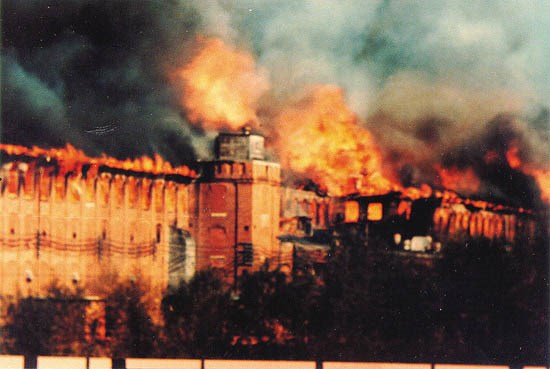
Margaret Payne was born in Piedmont, South Carolina, on July 9, 1925, to James Huff Payne (37) and Blanche Peden Payne (32). She had three older brothers - James (who died in infancy), Harold, and William, and one younger sister, Lillian.
Piedmont, in the early 20th century, was a small mill town, and people who knew Margaret and her sister Lillian "Lil" shared that she lived a fairly typical life for a girl in the 1940s. There is mention of "Lil" in the letters, and we have been told that Margaret, Lillian, and their cousin Ruby Payne (who was just a year older than Margaret) enjoyed spending time together. Seen below is a photograph of Margaret, Ruby, and Lillian taken on the street (location and date unknown).
Margaret met John Dolin at some point in 1942 while he was stationed at Greenville Army Air Base. From the letters and other background research, we surmise they may have met at a social event or dance, most likely at or near the base or in nearby Greenville, SC. Margaret was about 17 at the time and living at home with her parents, brother William, and sister Lillian at 58 Main St., Piedmont, SC, in one of the mill houses owned by the Piedmont Manufacturing Company.
Margaret worked at several places during her lifetime, including the Piedmont Manufacturing Company mill with her father and brother, but never married; some friends and family speculate that John broke her heart. She died in 2016 in Greer, South Carolina, when she was about 91 years old.
L-R: Margaret Payne, Ruby Payne (cousin), Lillian Payne (sister) - n.d.





Margaret and Ruby in 1941

Google Maps image of 58 Main St. Piedmont taken in 2013
Margaret and her family lived in this mill house owned by the Piedmont Manufacturing Company, located at 58 Main St. Piedmont, Greenville County, South Carolina. Their family purchased the house from the mill in the 1950s. Margaret continued to live at this address until shortly before she passed away.

The original Piedmont Manufacturing Company plant was built in 1876 and consisted of a four-story, L-shaped building that sat on the east bank (Greenville county side) of the Saluda River in Piedmont, South Carolina. It was significant for its association with Piedmont Manufacturing, an influential postbellum southern textile industry leader. Founded in 1873 by Henry P. Hammett, Piedmont Manufacturing was one of the world’s leading producers of textiles. At one point, this plant—known as Piedmont Number One after the construction of a second plant (Piedmont Number Two) nearby—was among the largest textile plants in the world. By 1895 a total of 4 mill buildings existed, three on the Greenville side of the Saluda River and one on the Anderson side connected by a footbridge. The Company stayed in the Hammett family until it was sold in 1946 to J.P. Stevens and Co., Inc. At the end of 1938, V.J. Lipscomb was named superintendent, and he would have been the Payne family's boss. Margaret's father James, both brothers William and Harold, along with Margaret all worked at various times at the mill. During World War II, many Piedmont men and women served in the armed forces. In January 1946, J.P. Stevens & Co. announced that it was buying Piedmont Manufacturing Company and 28 other Southern mills.
Piedmont Number One was designated a National Historic Landmark on June 2, 1978, in recognition of the importance of Henry Pinckney Hammett and his company to the postbellum Southern textile industry. The success of Hammett's company has been cited as the impetus for the rapid proliferation of Southern cotton mills in the 1880s. Piedmont Number Two, although extant at that time, was not included in the designation because it had been substantially altered since Hammett's day.
 Piedmont Number One burns in 1983.
Piedmont Number One burns in 1983.
NPS Photo
A fire in October 1983 destroyed much of Piedmont Number One; the ruins of the building were subsequently dismantled. The total destruction of Piedmont Number One led to the withdrawal of its Landmark designation on March 5, 1986; it was also removed from the National Register of Historic Places.
Citations:
Tullos, Allen. “The Carolina Piedmont.” Southern Spaces. Accessed April 14, 2023. https://southernspaces.org/2004/carolina-piedmont/.
“Piedmont Manufacturing Company.” SC Historic Properties Record : National Register Listing : Piedmont Manufacturing Company [S10817723997]. Accessed April 17, 2023. http://schpr.sc.gov/index.php/Detail/properties/55477.
“Piedmont Manufacturing Company Number One.” National Parks Service. U.S. Department of the Interior. Accessed April 17, 2023. https://www.nps.gov/subjects/nationalhistoriclandmarks/piedmont-manufacturing-company-number-one.htm.
“Piedmont Manufacturing Co.” The Greenville Textile Heritage Society. Accessed April 17, 2023. http://greenville-textile-heritage-society.org/mills/piedmont/.
In June 1943, John was moved from Greenville Army Air Base to Dale Mabry Army Air Field in Tallahassee, Florida. The letters show that he tried to relocate to the new base without telling Margaret until after he arrived in Florida. The letters convey the uncertainty of the times, but it is easy to forget that John and Margaret were just 21 and 18 years old when these letters were written based on their discussions of love, marriage, and the future.
From Dale Mabry Army Air Field, John moved to the ordnance training center at Camp Santa Anita in Arcadia, California; he moved about every 3 months to a new base for new training. John continued to write to Margaret, professing his love and desire to get married one day. Late in 1943, Margaret learned from John's sister Isabel that he had been shipped overseas; she subsequently received a letter from England with his APO address.
Eventually, Margaret received a letter from John's new English war bride, Christine, asking her to stop writing to John; this is how Margaret discovered that John had gotten married. Margaret wrote to his commanding officers to make sure that John was truly married and received confirmation on August 28, 1944.
Margaret would go on to write a few other soldiers including one named Joe Williams, a young Texan who passed through the Greenville Army Air Field during his time in the service, but she never married.